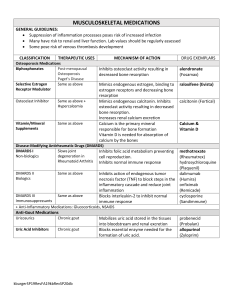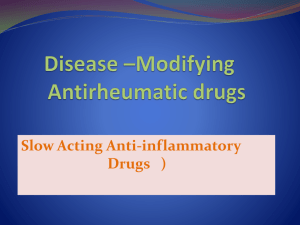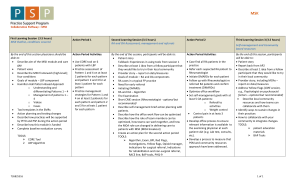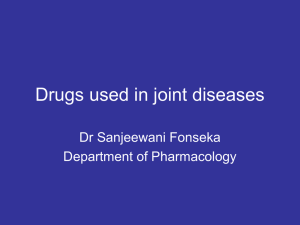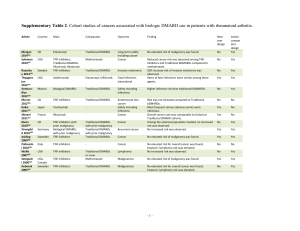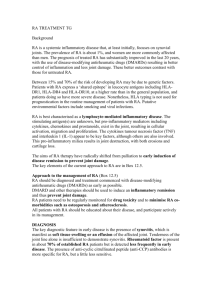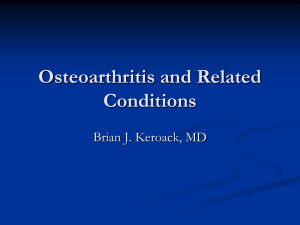Disease-Modifying Anti-Rheumatic Drugs (DMARDs) used
advertisement
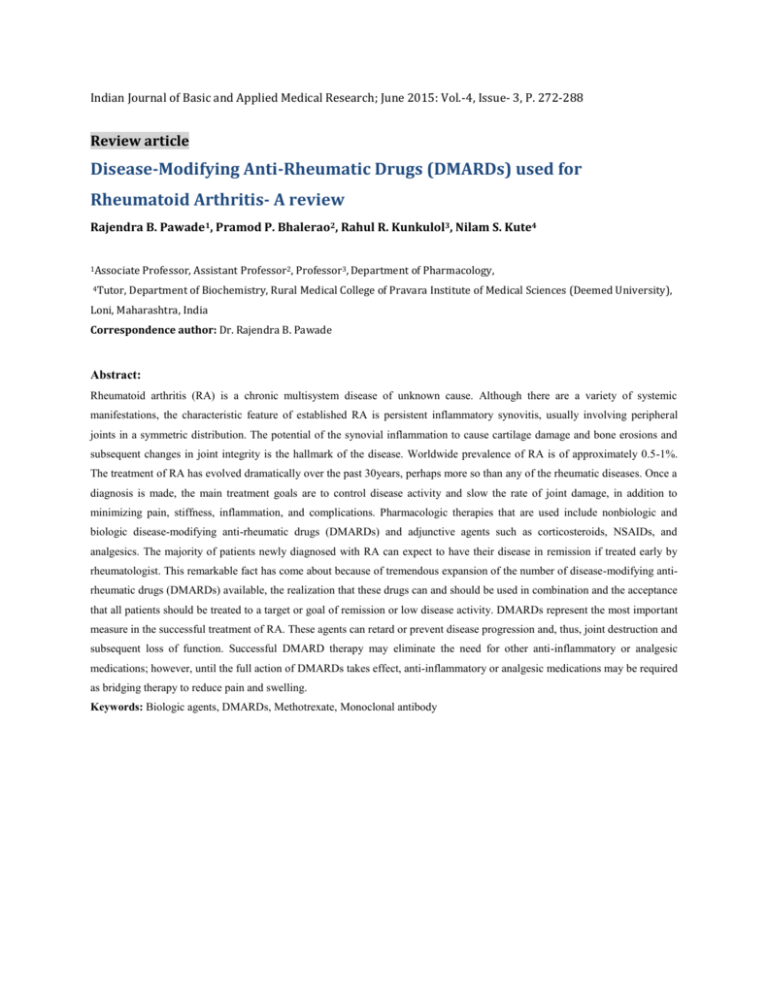
Indian Journal of Basic and Applied Medical Research; June 2015: Vol.-4, Issue- 3, P. 272-288 Review article Disease-Modifying Anti-Rheumatic Drugs (DMARDs) used for Rheumatoid Arthritis- A review Rajendra B. Pawade1, Pramod P. Bhalerao2, Rahul R. Kunkulol3, Nilam S. Kute4 1Associate 4Tutor, Professor, Assistant Professor2, Professor3, Department of Pharmacology, Department of Biochemistry, Rural Medical College of Pravara Institute of Medical Sciences (Deemed University), Loni, Maharashtra, India Correspondence author: Dr. Rajendra B. Pawade Abstract: Rheumatoid arthritis (RA) is a chronic multisystem disease of unknown cause. Although there are a variety of systemic manifestations, the characteristic feature of established RA is persistent inflammatory synovitis, usually involving peripheral joints in a symmetric distribution. The potential of the synovial inflammation to cause cartilage damage and bone erosions and subsequent changes in joint integrity is the hallmark of the disease. Worldwide prevalence of RA is of approximately 0.5-1%. The treatment of RA has evolved dramatically over the past 30years, perhaps more so than any of the rheumatic diseases. Once a diagnosis is made, the main treatment goals are to control disease activity and slow the rate of joint damage, in addition to minimizing pain, stiffness, inflammation, and complications. Pharmacologic therapies that are used include nonbiologic and biologic disease-modifying anti-rheumatic drugs (DMARDs) and adjunctive agents such as corticosteroids, NSAIDs, and analgesics. The majority of patients newly diagnosed with RA can expect to have their disease in remission if treated early by rheumatologist. This remarkable fact has come about because of tremendous expansion of the number of disease-modifying antirheumatic drugs (DMARDs) available, the realization that these drugs can and should be used in combination and the acceptance that all patients should be treated to a target or goal of remission or low disease activity. DMARDs represent the most important measure in the successful treatment of RA. These agents can retard or prevent disease progression and, thus, joint destruction and subsequent loss of function. Successful DMARD therapy may eliminate the need for other anti-inflammatory or analgesic medications; however, until the full action of DMARDs takes effect, anti-inflammatory or analgesic medications may be required as bridging therapy to reduce pain and swelling. Keywords: Biologic agents, DMARDs, Methotrexate, Monoclonal antibody
